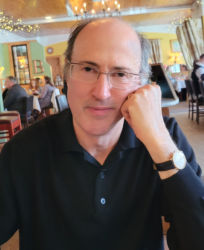WholeFoods Magazine (WF):Please tell us a little about your stores.
Aaron Gottlieb (AG):We opened our original store 20 years ago. It was the first full service natural foods store in our community. In 2006, we opened our second store 13 miles from the original. We took everything we learned in our first 10 years and improved upon the customer and employee experience. Our newest beach store, now two years old, is 10,000 square feet, the same size as our first store. All three have restaurant-style food service, and all feature large, 100% organic produce sections along with a full line of grocery, meat and seafood, and supplements and personal care.
WF:Fresh perishable foods are obviously important to you, but your newest store, at 10,000 square feet, is smaller than your second store, at 18,000 square feet. Why the change?
AG:We really feel we can do everything we need to do in the smaller footprint. We have enough room for the prepared foods and fresh produce departments, which take up the most room, yet are still small enough to be able to pay attention to every customer as he or she shops, and to create a comfortable, friendly atmosphere.
WF:How important is it for you to be 100% organic in your produce department?
AG:Twenty years ago, when we started, all you had to do to be different and attract customers was carry natural foods, which weren’t widely available at conventional supermarkets. Of course, today, every conventional grocer, as well as mass market and club stores, have the same natural and organic center-store items that we carry, so it is no longer a differentiator.
Because there is such broad product-mix overlap between us and every other retail channel, we knew we had to choose something we could do better than anyone else, and be best at that. For conventional grocery stores, meat is the marker for the rest of the shopping basket; it’s what drives the shopping trip. For a natural food store, it’s organic produce. So, we decided that our calling card would be organic produce, and that is what we lead with in our weekly ads, every week.
WF:Weekly ads? Most of the natural industry uses a monthly promotional schedule. Why did you decide to go weekly?
AG:We realized that all of the conventional grocers in our trade area were running a weekly ad, and that shoppers were paying more attention to that cycle than the monthly cycle found traditionally in natural food stores. So we knew we had to step up our game if we were going to have a chance at attracting those shoppers. We also believed they would love what they found once they got here, but we had to take steps to make sure they were aware of us, and would consider us as an option.
WF:With the industry using a monthly schedule, was it a challenge to increase your promotional tempo with vendors?
AG:We knew a few things were true. First, that the need to change was about survival. Second, that as an independent natural products retailer, we were probably a lot less efficient — and therefore more costly for our suppliers to deal with — than larger chains. That meant we wanted to make sure our vendors knew we thought of them as our partners throughout the year — that we would give as much as we got, and that it had to be a mutually worthwhile relationship. Third, we were willing to be patient as we implemented the changes, to let them happen and allow enough time for them to take effect.
With our decision to be the best at organic produce, using the weekly ad as a vehicle to have maximum impact, we focused our requests on specific, high-frequency items, and worked really hard with our suppliers to reach the best possible prices. Organic bananas at 39 cents; 99-cent gala apples, for example.
WF: How has the internet, and shoppers’ changing habits, affected you?
AG:Rather than being angry about customers going online, we realized this is just another way people want to shop. It’s not wrong, and online sellers are just marketing their products in a different way than traditional brick-and-mortar stores. We don’t have the attitude that natural and organic products are “ours.”
The next generation coming up will be the main drivers of our success in the future, and they are digital natives. We have to adapt to the way they relate to the world, and how they want to shop.
WF:How do you handle social media?
AG:Right now, it is a part-time job for our team that has other duties. While they are doing their primary tasks, they monitor our various digital platforms throughout the day, and make sure to respond in a timely fashion to any feedback on those sites, usually within a few hours.
WF:What about delivering food? Have you thought about self-delivery versus using a third party?
AG:We use Instacart. We looked at how much it would take to develop the online delivery platform infrastructure and realized we didn’t have the time or financial resources to do it right.
While we are concerned about controlling quality by outsourcing delivery through a third party, we monitor it. My wife and several of our employees subscribe to Instacart deliveries from our stores so that we can keep a constant check on how they perform; how the delivery people act; and in what condition the products arrive.
One of the main things that attracted me to Instacart was the free publicity. Native Sun appears prominently in their local ads along with our other — larger — conventional supermarket competitors in the trade area. This puts us on par with much larger retailers, raising our visibility and credibility in the minds of shoppers. To do that on our own would be very expensive.
Plus, if our customers have access to Instacart, maybe it increases the frequency with which they shop us. Instead of having to fill in for a few items at our competitors, shoppers can stay right with us in between physical shopping trips. I’m willing to take the reduction in our margin to achieve those benefits.
WF:With over 150 employees, how do you think about managing?
AG:Every morning, we have a 15-minute huddle to talk about the focus for the day. We believe it is just as important for us to serve our employees as it is to serve our customers. If everyone is on the same page, heading in the same direction every day, you really increase your chances for success.
I learned the value of having a clear focus for employees when we tried to increase customer footsteps [traffic count] at the same time we were trying to increase basket [transaction] size. You can’t do both well at the same time, because what you have to do to accomplish one is not the same as for the other. And if you try to do both at the same time, the message to the employees gets confusing.
WF:Could you elaborate on that?
AG:To build basket size, we look at various industry-wide sales reports for trends. Because we want to promote those items aggressively, we have to buy in heavily, which increases inventory expense. When we want to build footsteps instead, that depends on what the marketing department wants to feature on promotion; say, discounts of 25% off all supplements, for example. Well, that hits your gross profit margin. The reason you can’t do both at the same time is you usually can’t afford to take the margin hit on promotional items and add heavy inventory on trending items.
WF:Many independent retailers around the country have smaller stores, with fewer perishables. What would you say to them?
AG:Whether you are a small or a large store, you still need to choose your priorities. One of the things about our industry is that it is still growing faster than conventional foods. So, anything you are able to touch and focus on still grows, but with the increase in competition, what you don’t touch dies faster.
WF:How important are supplements and the wellness categories?
AG:Wellness is our platform that establishes us as educators, so it is essential to our business. Customers that search online for information about nutrition now come to us for validation of that information.
WF:How do you deal with the intense internet pricing competition on supplements?
AG:What we realized early on is that every customer is not your best customer. The ones that showroom comparison-shop are really a small minority, which keeps us from getting too stressed out about it.
And while someone may occasionally find a supplement price that is 10 or 15 dollars cheaper online, we respond by saying that these types of deals online shift from time to time based on availability and the willingness of the seller to slash prices. While we won’t always have the lowest price, we will always have a fair price.
You have to be willing to have that conversation with your customer.
WF:Thank you for your time today.
AG:My pleasure. JJ
Jay Jacobowitz is president and founder of Retail
 Insights®, a professional consulting service for natural products retailers established in 1998, and creator of Natural Insights for Well Being®, a holistic consumer marketing service designed especially for independent natural products retailers. With 40 years of wholesale and retail industry experience, Jay has assisted in developing over 1,000 successful natural products retail stores in the U.S. and abraod. Jay is a popular author, educator, and speaker, and is the merchandising editor of WholeFoods Magazine, for which he writes Merchandising Insights and Tip of the Month. Jay also serves the Natural Products Association in several capacities. Jay can be reached at (800)328-0855 or via e-mail at jay@retailinsights.com.
Insights®, a professional consulting service for natural products retailers established in 1998, and creator of Natural Insights for Well Being®, a holistic consumer marketing service designed especially for independent natural products retailers. With 40 years of wholesale and retail industry experience, Jay has assisted in developing over 1,000 successful natural products retail stores in the U.S. and abraod. Jay is a popular author, educator, and speaker, and is the merchandising editor of WholeFoods Magazine, for which he writes Merchandising Insights and Tip of the Month. Jay also serves the Natural Products Association in several capacities. Jay can be reached at (800)328-0855 or via e-mail at jay@retailinsights.com.Published in WholeFoods Magazine January 2018











